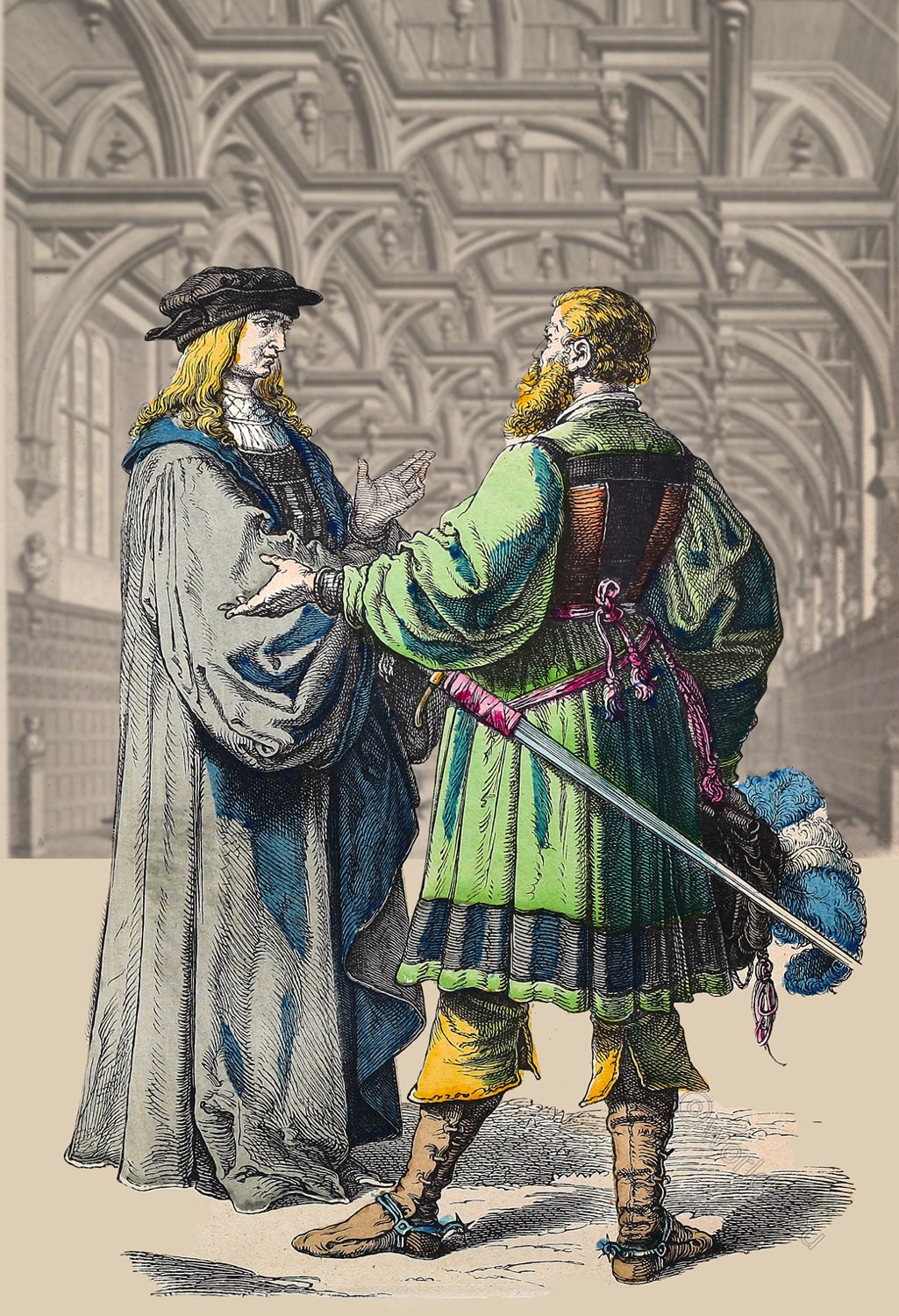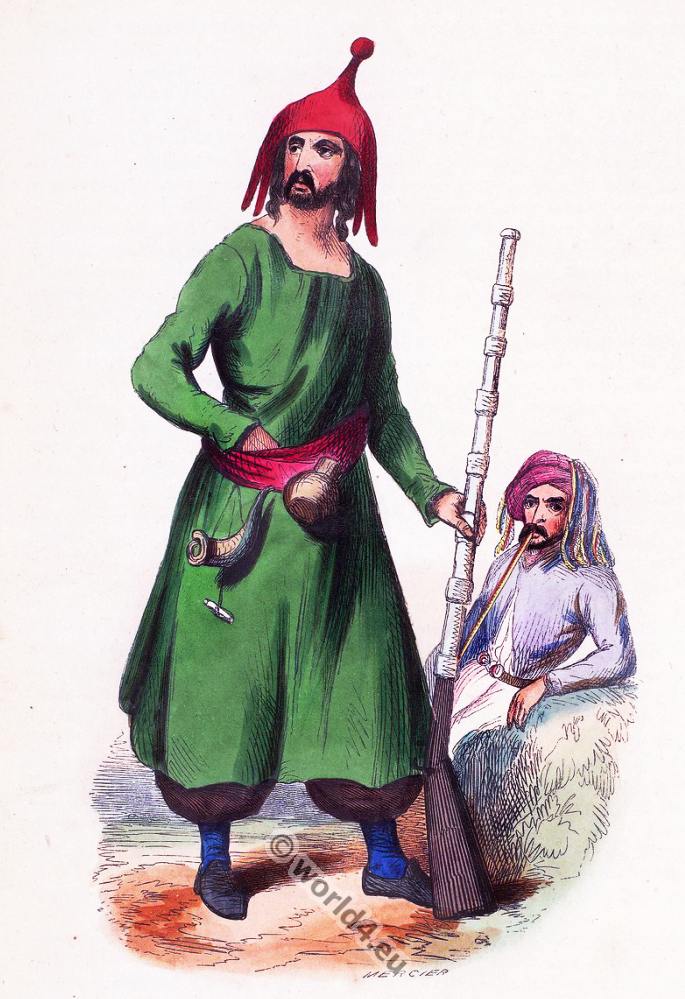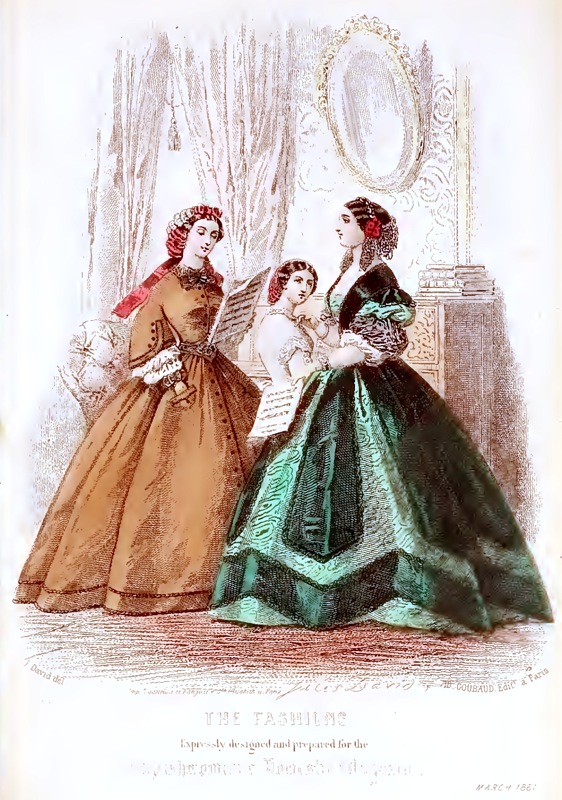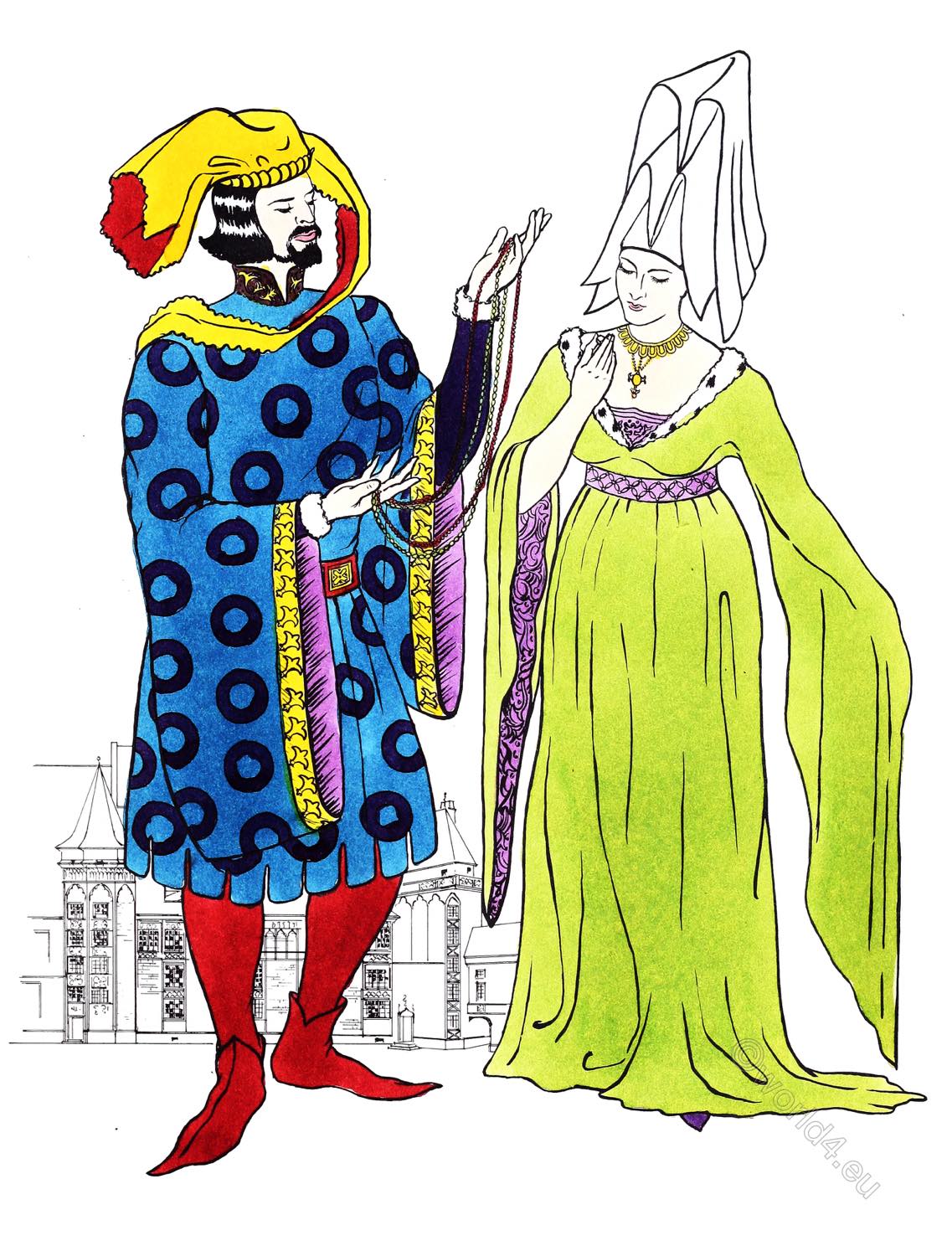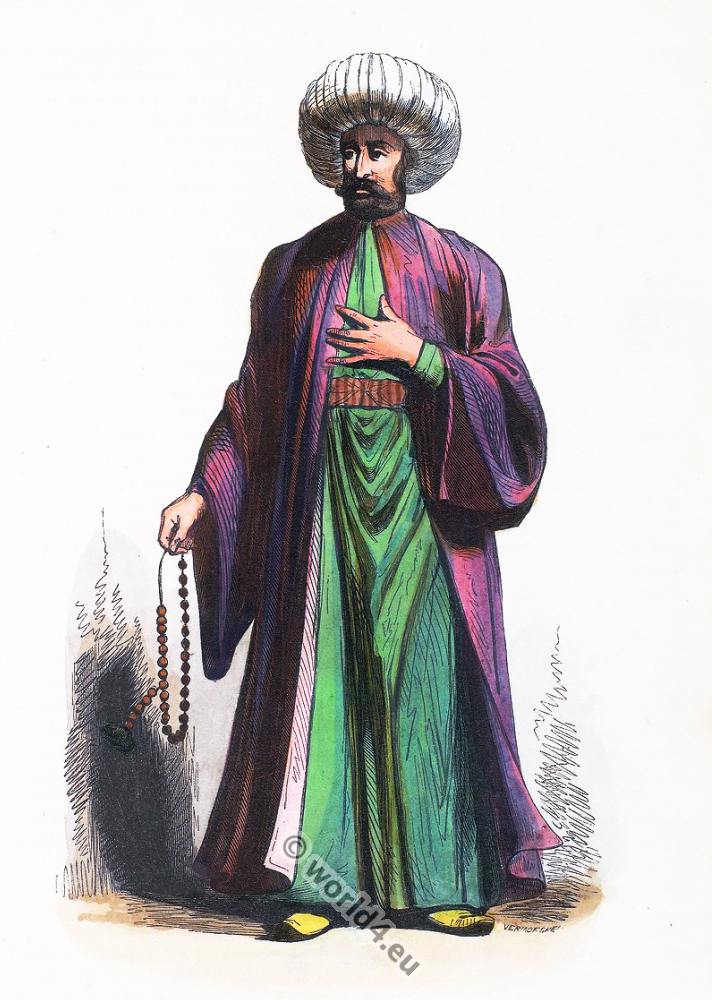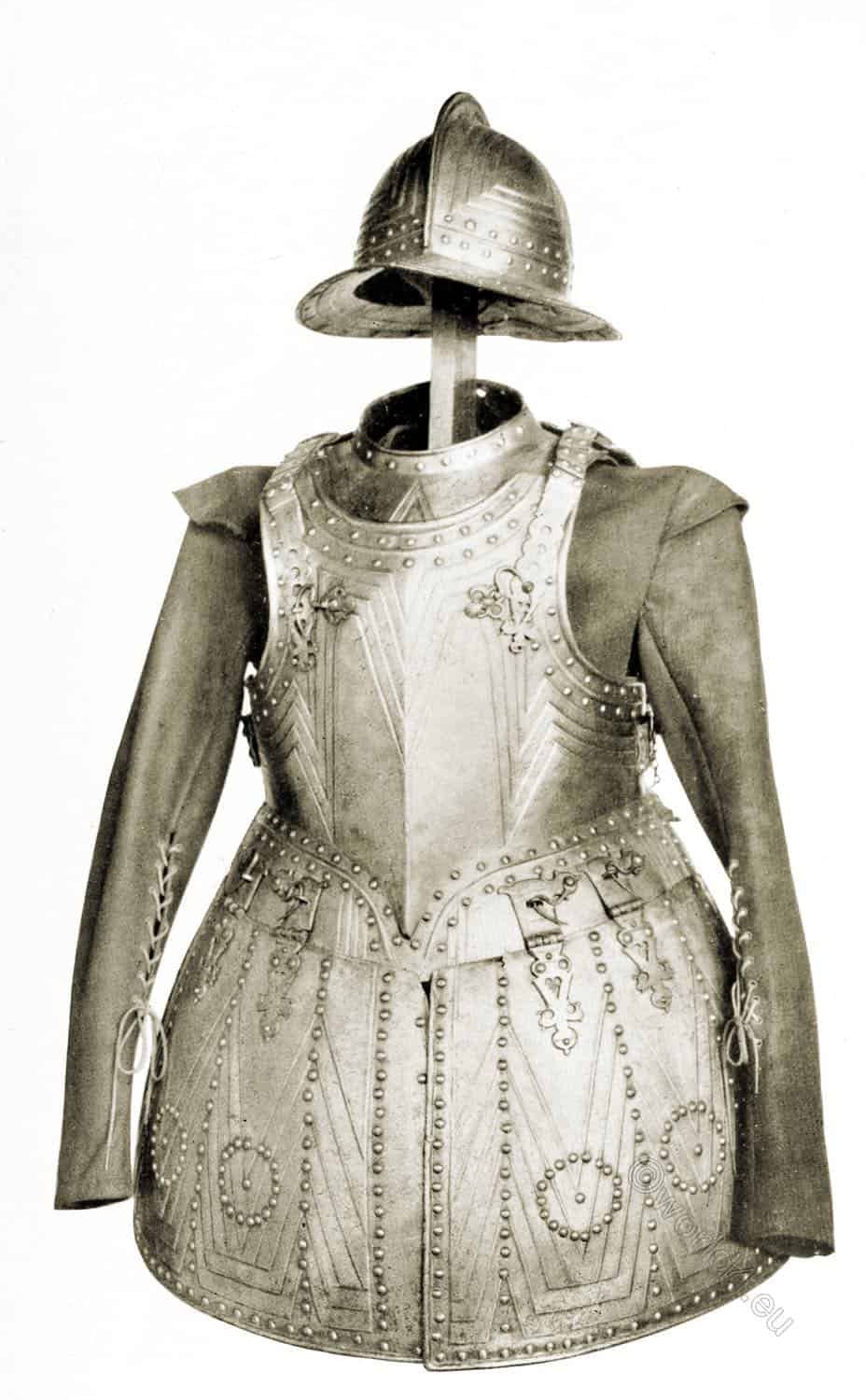Early Victorian. 1840-1865
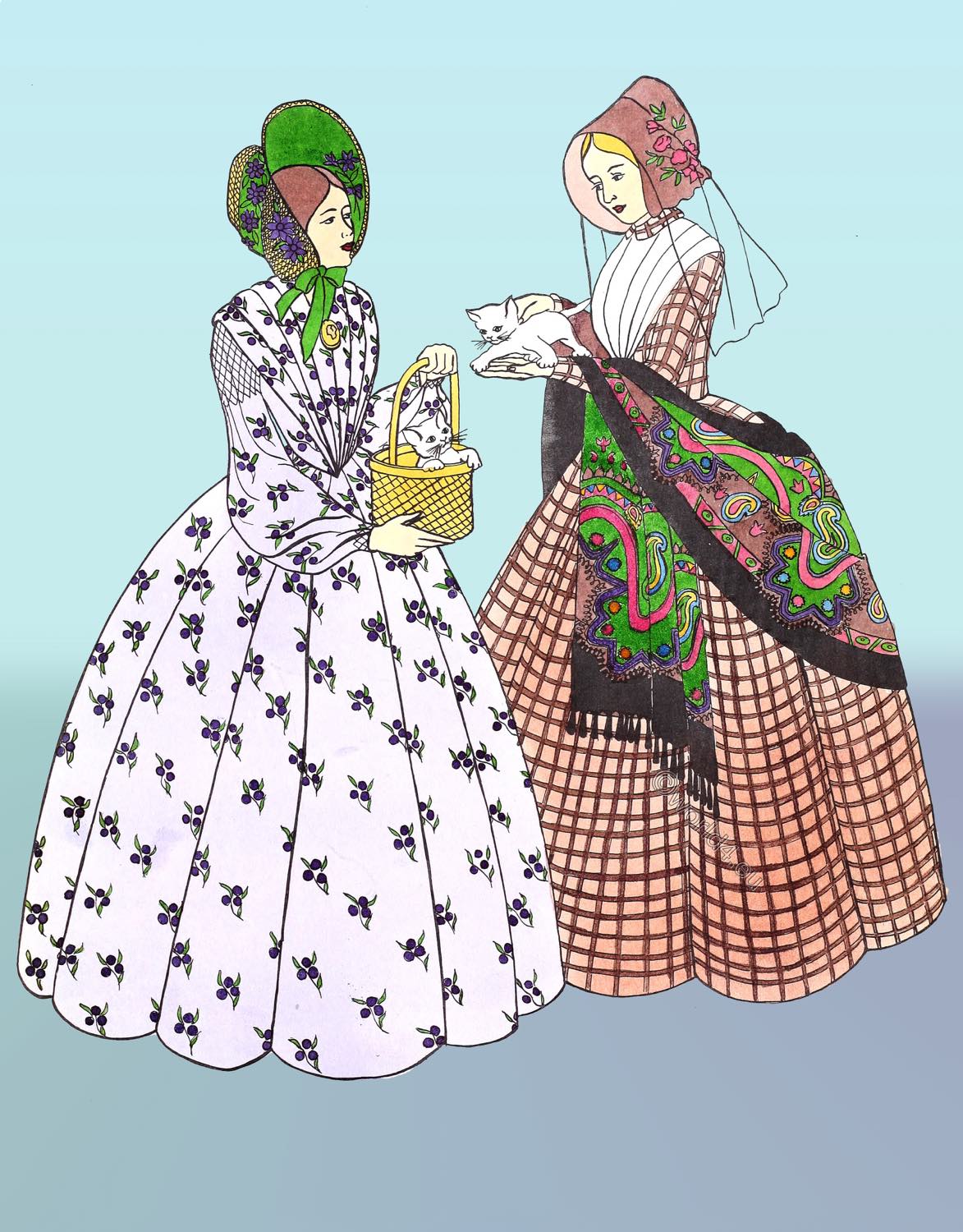
The Victorian Age (also Victorian Epoch, Victorian Era) in British history usually refers to the long period of Queen Victoria’s reign from 1837 to 1901.
EARLY VICTORIAN
PLATE NO. 99
The crinoline of the mid-forties was probably the most concealing costume ever worn by women. This is strange in view of the fact that just forty years before, in the early Empire, women’s clothes were more revealing than they had ever been.
Both of these ladies wear bonnets. That worn by the woman on the left has a lower crown than those of the previous period. The brim flares up framing the face and is worn in general rather far back on the head. This model is probably of straw and ties under the chin in front. The other bonnet is of the Quaker type, perhaps a little more shallow than usual. A light veil has been draped easily over the top. The coiffures that peep from beneath these bonnets are of that type which is regarded as most characteristic of this century- the hair parted in the center and drawn back covering the ears to a knot low at the rear.
The fronts of these bodices are simple, interesting, and rather new. They are strongly reminiscent of the fichu line which was revived during the period.
In this case the excess material has been gathered into the sharp bodice point. The sleeves worn by the woman on the right are a good deal more typical of the’40’s than those on the other figure which came into general vogue at the end of the next decade.
These skirts have not yet reached their fullest extent of development (see Plate 102) but they are by now collectively longer, larger, and more voluminous than at any previous time in this century. Both of the overall designs here are quite typical of the period, the flower pattern probably more so than the checks.
For some time shawls have been becoming more popular as outer garments. By the early Victorian period they were the standard wrap. The artistry exhibited in the workmanship of the shawls of the period was notable. Spanish and Brussels lace shared favor with the Scotch paisley weave. An exquisite example of this latter type is worn by the lady on the right.
History of Costume
Related
Discover more from World4 Costume Culture History
Subscribe to get the latest posts sent to your email.

